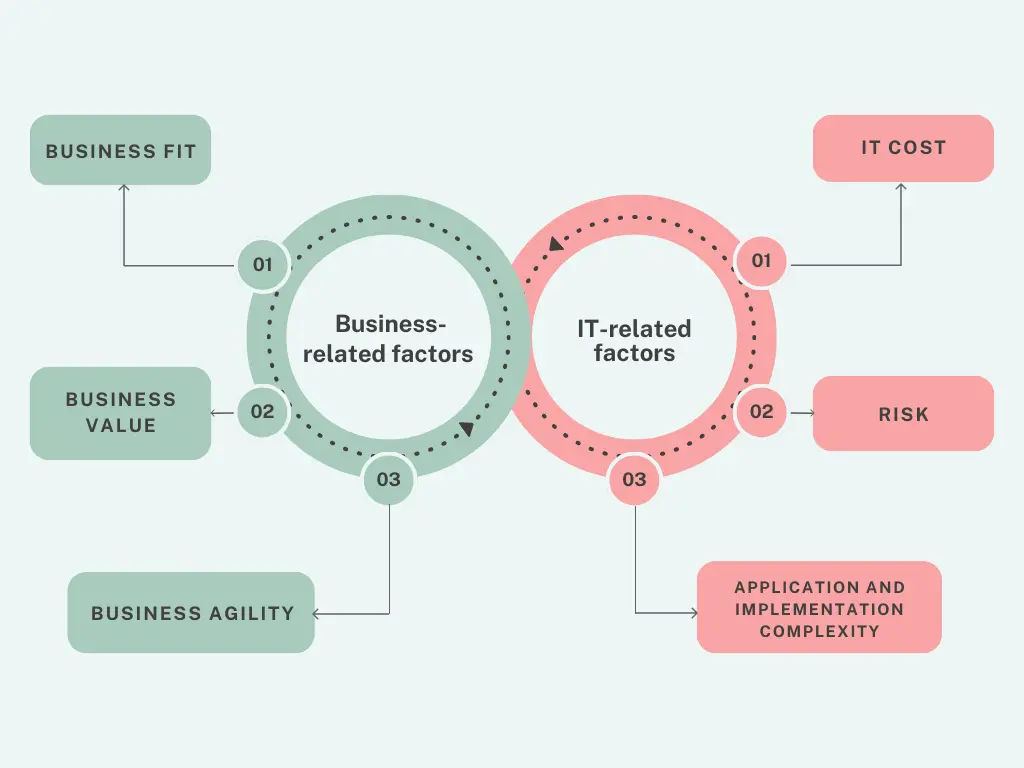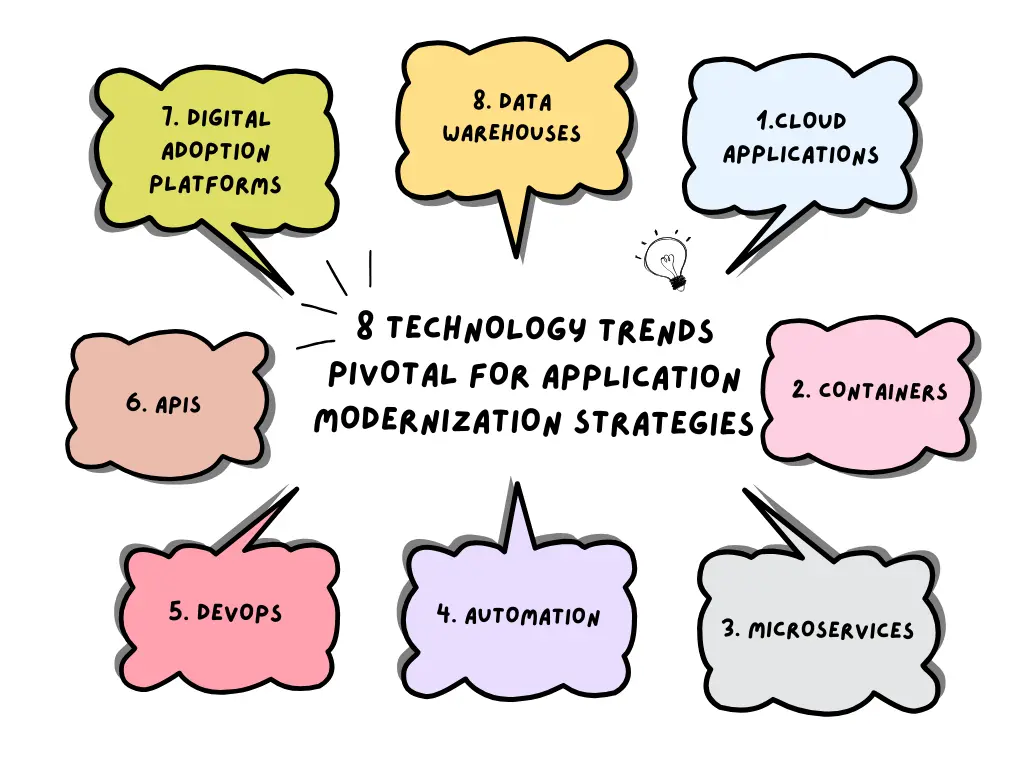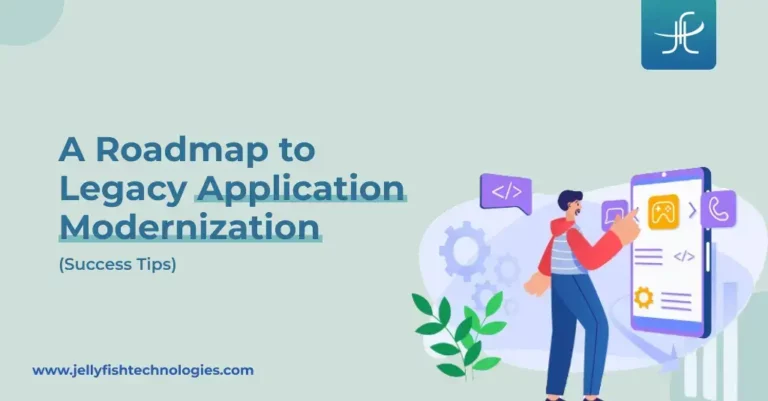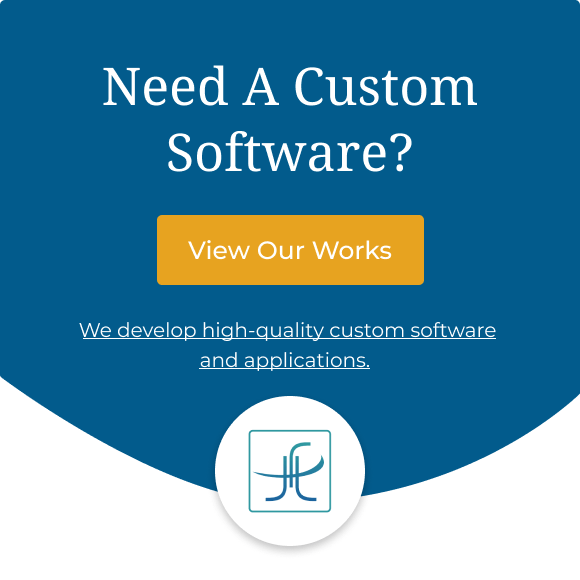Legacy application modernization is the methodology that helps enterprises replace their outdated legacy applications with modern-day applications by reshaping, rebuilding, and replacing legacy applications.
Proper knowledge and understanding of application modernization can help you immensely with your organization’s digital transformation. Over half a percentage of legacy system modernization can not succeed due to a lack of niche knowledge and expertise.
In today’s emerging digital world, legacy applications can become a significant bottleneck for businesses, hindering their ability to respond to changing market demands, integrate with modern technologies, and deliver exceptional user experiences.
With the world experiencing a modern age of digital transformation, legacy applications often present challenges to businesses. According to a report by Statista, the market for application modernization is growing rapidly and will reach a size of 36.86 billion U.S. dollars by 2027. The need for digital transformation is driving the demand for application modernization tools.

These applications built on outdated technologies and platforms can foil innovation, and the scalability of projects and pose significant security risks to the organization.
Businesses in the present day scenario are integrating, cutting-edge technologies to make their workforce intelligent with automation and artificial intelligence. Visit our blog to learn more about AI in software development.
This is where application legacy modernization comes into play by uncovering opportunities to enhance efficiency, improve user experiences, and stay competitive in the marketplace.
As technology advances, legacy systems often need help to keep up, leading to increased maintenance costs, security vulnerabilities, and compatibility issues.
Here’s a complete guide and best practices for successful legacy application modernization, empowering your organization to embrace digital transformation while minimizing risks and maximizing the return on investment (ROI).
What is a Legacy System?
Legacy systems simply reflect the software, technologies, or processes incorporated by a company that has become ineffective and outdated with the current development.
However, the process of updating the legacy system is not an easy task. It demands prior planning, a careful understanding of the existing system, and a well-prepared blueprint of the roadmap to execute a successful transition. You’ll encounter common challenges and risks associated with outdated technologies, like:
- Security vulnerabilities
- Compatibility issue.
- Limited support
- Reduced performance
- Increased downtime
- Compliance risks
- Higher maintenance costs
- Lack of innovation
- Inefficient workflows
- Talent retention challenges
What is Legacy Application Modernization?
Legacy application modernization is the process of transforming or modernizing applications that are no longer relevant to keep up with current business needs, technological advancements, and user expectations. It captures different ways, i.e. re-platforming, re-hosting, re-engineering, or rebuilding using the latest technologies and techniques.
The aim is to use all of the positive aspects of cloud computing, microservices architecture, DevOps practices, and anything new currently available to supply solutions that are agile, scalable, and resilient.
Why Should You Modernize Legacy Systems?
The process of legacy application modernization presents a myriad of profound and enduring benefits, steering organizations toward sustained growth and competitive benefits. Let’s explore these transformative advantages-
Benefits of Application Legacy Modernization
1. Embracing Future-Ready Solutions
Transitioning to the latest version of legacy applications leads to systems that are quick, agile, and adjustable to the current technological circumstances and dynamics of the markets. This, in the long run, tends to create relevance and resiliency, both of which are crucial for today’s organizations to maintain a competitive edge.
2. Catalyzing Operational Efficiency
As the organization undertakes the modernizing journey, it instills the necessary discipline in its operations, which facilitates the flow of the work, improves decision-making, and makes work more and more collaborative, eventually leading to long-term operational excellence.
3. Scaling Seamlessly to Meet Demands
With minimal boundaries, modernized applications possess the elasticity and ability to respond rapidly to larger needs and shifts in the case of companies scaling up their operations, huge workloads, and the appearance of new opportunities.
4. Unlocking Substantial Cost-Efficiencies
Initially, modernization capital is shrouded in uncertainty as it appears to be substantial. Still, in the long run, the cost-savings are huge, and organizations pay less for repair and maintenance, avoid unplanned shutdowns, and use resources optimally, so they eventually collect more than what they spend, leading to better cost efficiency.
5. Strengthening Security and Compliance
Legacy application modernization strengthens the security measures, building the walls against cyber threats, the security personnel, and stakeholders, and integrating strict privacy and regulatory status, thus ensuring organizational integrity and safeguarding trust.
Legacy App Modernization and Custom Web App Development for a Leading Proptech Company
Security issues do pose a greater threat to the software architecture, having reliable tools and technologies is of utmost importance for any business. To get a detailed idea about security testing for application development, visit our blog.
6. Promoting a Culture of Innovation
Technology-backed companies enable the personnel of their businesses to disclose their creative power, which, combined with the distant-distance innovation culture, allows for the development of amazing, avant-garde products and services.
7. Elevating Customer Experience Excellence
Through better customization, prompt responses, and recent solutions, created by current applications, companies strengthen customer experiences, which helps those companies invest in long-term relationships and brand loyalty in the new customer-centered world.
Prime factors for global companies’ switch to modernizing legacy applications:

7 Key Steps of Legacy Applications Modernization Strategy
Step 1: Assess the Current State of Your Legacy Applications
The first and foremost step in any legacy application modernization process is to perform a thorough assessment of your existing systems. This includes the involvement of multiple domain experts.
If the existing legacy system is not performing according to the market needs, and not contributing to the success of the enterprise–it needs to be modernized.
Also read: Modernizing Legacy Systems: Benefits, Challenges, and Migration Strategies
When assessing and updating legacy systems, there are six factors to take into account, which can be divided into two groups: IT drivers and business drivers.

Business-related factors
- Business fit: Does the application align with the new business goals?
- Business value: Does the application add more value to the business?
- Business agility: Can the application adapt to the fast-paced business demands of today?
IT-related factors
- IT cost: Is the total cost of ownership for the application high?
- Application and implementation complexity: Is the application too complicated to manage and implement?
- Risk: Does the application expose the business to new security risks?
The goal is to gain an understanding of the current state of the legacy applications, including their architecture, technology stack, functionality, and integration points.
Step 2: Define the Target State and Modernization Approach
After having a prompt understanding of the current state of your legacy applications, the next step is to define the goal and required approach for modernization. This involves the declaration of functional requirements, project architecture, and a technology stack that will work on modernized applications.
There are several modernization approaches to consider, and some of them are listed below:
| Approach | Description |
|---|---|
| Retain | This approach involves reusing components within a new architecture, often accessed as services through APIs. It’s a low-risk method, allowing gradual expansion with microservices. |
| Rehosting | Move the legacy application to a new infrastructure or platform without code modification. Quick and low-risk, but may not address underlying technical debt. |
| Replatforming | Migrate the application to a new platform with minor code modifications for performance, scalability, or compatibility improvements. |
| Refactoring | Restructure and rewrite portions of the codebase to enhance architecture, maintainability, and performance while preserving core functionality. |
| Rearchitecting | Redesign and rebuild the application from scratch, leveraging modern architectures, frameworks, and technologies for comprehensive improvements. |
| Replacing/ Rebuilding | Replace the legacy application with a new, off-the-shelf, or custom-built solution, which may be more cost-effective and efficient in certain cases. |
Step 3: Develop an App Modernization Plan of Action
Develop an app modernization roadmap that clearly outlines the specific steps, project pace and timelines, and resources needed for the transition from the legacy application to a modernized software solution.
Be updated with the future trends in software development technologies to incorporate the tech stack that best fits your business requirements.
The process of transitioning includes several key steps to consider for the seamless integration of legacy application modernization, we’ve listed some below:
| Aspect | Description |
|---|---|
| Project Governance and Communication Plan | Establish clear roles, responsibilities, and decision-making processes. Develop a communication strategy to keep stakeholders informed throughout the modernization journey. |
| Data Migration Strategy | Define a plan for migrating data from the legacy system to the modernized application. Ensure data integrity, consistency, and compliance with relevant regulations. |
| Testing and Quality Assurance | Implement a robust testing strategy covering functional, performance, security, and user acceptance testing. Ensure the modernized application meets all requirements and delivers a seamless user experience. |
| Training and Change Management | Develop a comprehensive training plan to upskill teams on new technologies, processes, and best practices. Implement change management strategies to facilitate a smooth transition and user adoption. |
| Release and Deployment Plan | Outline steps for releasing and deploying the modernized application, including rollback strategies, phased deployments, and contingency plans to minimize downtime and mitigate risks. |
| Maintenance and Support Strategy | Define a long-term maintenance and support plan for the modernized application, including processes for ongoing updates, bug fixes, and enhancements. |
Step 4: Modernization Plan Execution and Monitoring Progress
With a defined roadmap in place, it’s time to execute the modernization plan. This phase involves implementing the roadmap accordingly with the chosen modernization approach and actively monitoring progress against the defined project timelines.
It is paramount to have open communication channels that provide periodic updates on the progress. Maintaining an agile approach can help mitigate risks and ensure that the application modernization strategy remains aligned with evolving business requirements.
Step 5: Be Ready for Future Growth and Changes
In this digital transformation era, organizations must be prepared for changes and transformations in the organizational landscape. Legacy systems, often need to be updated in design and offer hindrances to new features and functionalities.
Wisely and with proper research, select a modernization approach that offers the flexibility to accommodate further changes. For example, future-proof applications can more effectively meet organizational business requirements than traditional ones.
Step 6: Choose the Right Modernization Partner
It’s hard to believe that your institution possesses every single necessary internal resource that could be utilized in modernization unless your organization is operating in the field of high technology. Even in this case, modernization is not a core concern, but a valuable add-on.
Consider partnering with experts in digital transformation, experienced in re-engineering technology, systems, and processes through various modernization approaches. Look for a team that utilizes Agile and DevOps practices to expedite your modernization project and maximize time-to-market.
Step 7: Observe and Optimize
Continually, during your modernizing process, keep a close lookout, adjusting and improving it. Step by step, run the periodic performance tests to seek and work on the changes in the apps to streamline issues such as hosting the app, licensing the software, connectivity to other services, and database integration.
What are the Risks Of Legacy System Modernization?
As we have discussed above, legacy app modernization can offer businesses a future-proof software solution, and enhance scalability with long-term business growth, but the risks it poses can never be outstated.
Some of the risks you should carefully manage and consider when undergoing legacy modernization include-
Compatibility Issues
Modernizing legacy software can cause compatibility issues with the existing software systems. Carefully integrate transition for all legacy systems needs when implementing application modernization.
Data access loss
During the transition of legacy systems to modernized software solutions, there is a risk that data access may be lost in the process. Improper migration of data to the new system causes this data risk, or if the compatibility does not match with old data.
Adoption issues
Application modernization often poses resistance due to changes in the working process. Newly adopted systems find it difficult to sustain internal expectations with the risk of resistance due to change.
Performance issues
Legacy application modernization also leads to performance issues if the software design does not meet business specifics. Keep in mind that the legacy application modernization services partner will help you evaluate your legacy systems and determine a modernization approach that helps minimize risk for your enterprise.
8 Technology Trends Pivotal for Application Modernization Strategies
App modernization allows businesses to leverage modern-day innovative technologies to help them achieve greater heights in their domain. Some of the popular integrated technologies are-

1. Cloud applications
Cloud networking makes it simpler for teams to share and access data across tools, applications, and locations. Enterprises can scale up their businesses, manage costs, and remain agile and competitive with user needs.
2. Containers
Containers are used to deploy and operate software in the cloud, making it easier to manage applications as they move between environments. Containers make operating modern applications more accessible, efficient, and secure.
3. Microservices
Modern-day apps prefer working with microservices linked to APIs. Organizations can choose the best solutions that fit their needs and connect them to deliver a unique software solution.
Ready To Begin Your Application Modernization Journey?
Upgrade and modernize your legacy applications to deliver advanced digital experiences, enhance agility and improve market responsiveness.
4. Automation
Automation of repetitive tasks provides workstations with better efficiency and makes teams more productive. With the advantage of automating work processes and tasks, teams can focus on core business work.
5. DevOps
DevOps refers to cooperation between development and operations. Through it, one can optimize operational efficiency and ensure product-modified customer dynamics immediately. The model transforms into analytics, monitoring, and metrics for making operational modernization decisions.
6. APIs
APIs stand for Application Programming Interfaces, which communicate information between applications. This mechanism of data sharing makes it possible to integrate and link tools together, with information flowing between systems working in concert. API integration services offer cloud systems and ensure that traditionally separated microservices no longer remain separate entities.
7. Digital adoption platforms
A digital platform of adoption overlays the applications to render a roadmap that leads, provides assistance, support, and information, and teaches users to use effectively the platforms they will be working on. This refers to how the visibility of contextual information can further adoption rates, and give rise to lower frustration levels related to technical changes.
8. Data warehouses
A modern data storage system is certainly focused on preserving, converting, and formatting a large amount of data quickly. With the emergence of new technologies and data-intensive applications, creating a modern data warehouse raises the necessity of data recognition, in general, and the necessity of applying the data correctly and preventing data privacy violations in particular.
How Do You Pick the Right Application Modernization Approach for Your Organization?
1. Lift & Shift
A lift-and-shift technique is a strategy where the application is moved to the cloud without any serious modifications in its architecture or design framework.
It’s easy to add new features without also worrying about the existing code, thus saving time and effort.
Lift & Shift is applicable, if there is an opportunity to keep the existing software system unchanged with no modification, but it should not be used on software systems that consume a lot of resources and could experience an extra improvement with cloud-native features.
Nevertheless, consider that though it reduces the time spent, it doesn’t make the most of the entire cloud’s features, as it can still hinder several cloud benefits that we had when deploying our application on the cloud.
Also read: What is IT Staff Augmentation? Advantages & Tips to Success
2. Refactor/Rearchitect
Contrary to the others, refactoring or re-architecting involves a large-scale technology migration of the application from being not yet ready to be in the form of an API. Although the cost of this kind of transformation is substantial, it is necessary to leap into the future.
Rewriting an app and its components enables you to re-organize it into various layers of cloud performance, so you can include all cloud features and not lose any of them.
Nevertheless, it has a cost of time and financing that becomes a substantial barrier, particularly for large-scale restructuring.
3. What to Avoid
When creating a roadmap, it’s crucial to avoid common pitfalls that can derail the application modernization software development process. When creating a roadmap, it’s crucial to avoid common pitfalls that can derail the application modernization business process:
- Unclear objectives: A plan that does not define specific objectives will often miss its target, turning it into a strategy that can work against your business.
- Inadequate planning: If failures to carry out analysis of existing systems and overlooking dependencies exist, it can be that, as a result, there will be unrealistic targets and planning omissions.
- Resource and stakeholder hurdles: The inadequacy of resource apportioning, and lack of stakeholder participation and engagement can be the reasons for the roadmap not being properly implemented to specific goals.
- Technological and execution missteps: Technology is a double-edged sword. When it is used correctly and the adoption process is well-monitored, it will work like a catalyst to modernize the work culture.
Final Thoughts
In conclusion, embarking on a journey of legacy application modernization entails a strategic approach guided by planning and key fundamentals for success. By integrating software modernization services custom-made for your organization’s unique needs, such as software modernization, mainframe modernization, and application modernization services, you can decode the full potential of legacy applications. Whether it’s modernizing legacy IT architecture or revitalizing outdated software systems, the process offers a pathway to enhance efficiency, scalability, and agility in the digital age.
Legacy Enterprise Application Modernization represents a pivotal opportunity to future-proof your organization, ensuring its reliability and competitiveness in today’s dynamic market. Businesses are leveraging AI development services for smart work solutions. With a focus on modernizing legacy applications and adopting state-of-the-art technologies, businesses can navigate the complexities of digital transformation, promoting innovation and growth. Modernize legacy systems into agile, adaptable assets that direct your organization toward sustained success in the ever-evolving digital era.


